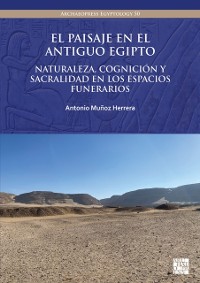El paisaje en el antiguo Egipto
Antonio Munoz Herrera
Geisteswissenschaften, Kunst, Musik / Vor- und Frühgeschichte
Beschreibung
In recent years, landscape archaeology has gained traction in Egyptological studies focused on necropolises and funerary beliefs. However, this approach often relies on outdated theoretical frameworks and methodologies borrowed from other historical periods. It has been predominantly applied in isolated studies without a comprehensive assessment of its broader impact on Egyptian culture.Concurrently, there has been a transformative shift in cognitive studies, particularly in understanding brain function within cultural contexts through neuroscience. This revolution challenges the notion that cognition solely occurs within the human brain, revealing how external factors like landscape and culture influence cognitive processes.El paisaje en el antiguo Egipto integrates these advancements with traditional archaeological and textual analyses to explore the landscape's role in shaping ancient Egyptian funerary practices. By examining physical landscape features, anthropic records, and phenomenological experiences through experimental neuro-archaeology (specifically using eye-tracking techniques), the study aims to comprehensively assess the landscape's cultural agency in ancient Egypt.Case studies in Umm el-Qaab and Thebes illustrate significant findings, revealing the landscape as not merely a backdrop but a dynamic force in cultural evolution. Sacred sites linked to natural phenomena are identified, introducing a novel conceptual framework. This research proposes a redefined understanding of the Egyptian landscape's cultural influence, emphasizing its pivotal role in ancient Egyptian studies previously overlooked.This study pioneers a nuanced perspective on landscape archaeology in Egyptology, offering insights into cultural development that defy conventional interpretations.

























